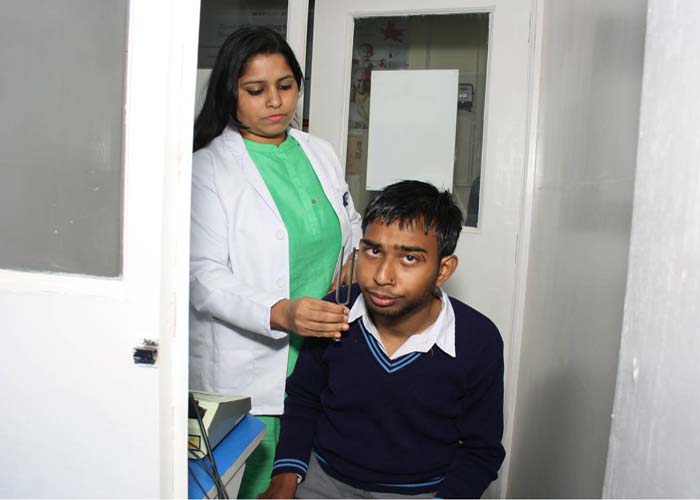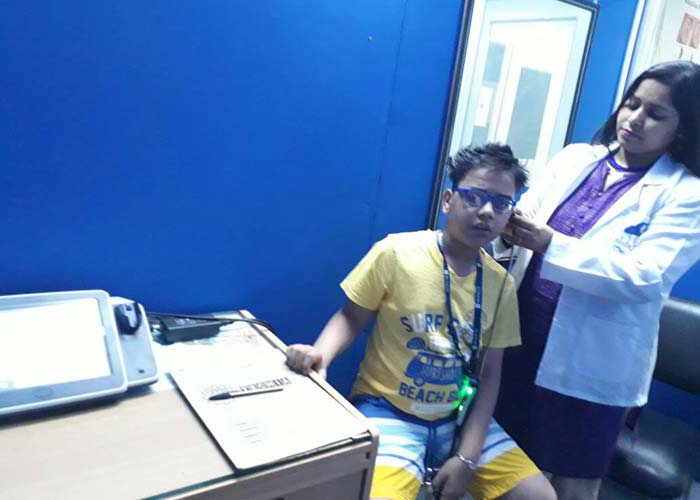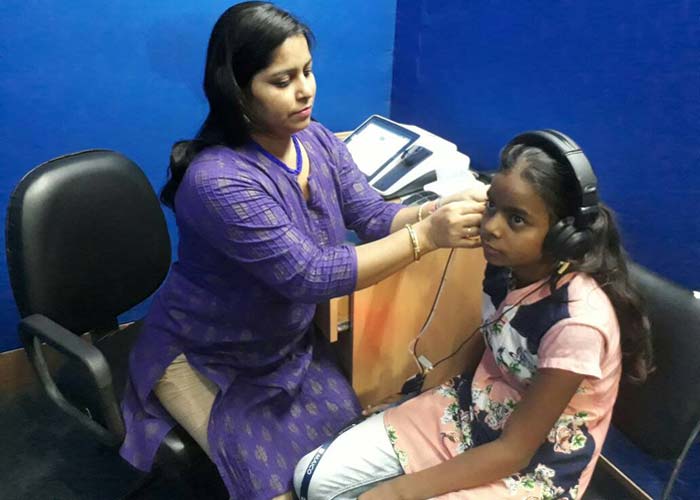- Opening Hours: 10am to 7pm(Monday-Saturday). Sunday on call appointment
- +91-9958309690, 8586929155 Book Appointment
Hearing test is a procedure followed in order to evaluate the sensitivity of a person sense of hearing. The hearing in noise test measures a person ability to hear speech in quiet and in noise. There are many tests like Pure Tone Audiometry (PTA), Tuning Fork Test(TFT) like Weber test, Rinne Test, Impedance Audiometry(IMP) /Tympanometry, Behavioral Observation Audiometry(BOA), Speech Audiometry, objective test OAE, ASSR, ABR etc are hearing tests which are performed using an instruments in order to determine hearing sensitivity of a person at different frequencies.
The test method is always decided by doctor or hearing care professional (Audiologist), depending on the indication, history, and purpose of the test.
Pure Tone Audiometry (PTA) - The aim of the test is to determine the threshold of hearing, ie. the minimum volume that the patient hears. The test result is the graph – audiogram, hearing threshold curve for air and bone conduction, on the basis of which it is possible to determine the size of hearing loss. In other words, PTA shows the status of the auditory cells in the cochlea of the inner ear.
Impedance Audiometry (IMP) /Tympanometry - Tympanometry is a medical test that measures the function and movement of the eardrum and middle ear. The results of tympanometry are represented on a graph called a tympanogram. The test is usually quick and painless, unless the eardrum or middle ears are inflamed. Tympanometry is typically used to detect or rule out several things: the presence of fluid in the middle ear, a middle ear infection, a hole in the eardrum (perforation), or Eustachian tube dysfunction.
Behavioral Observation Audiometry (BOA) - Behavioral observation audiometry is a test performed in children under 3 years of age, non-cooperating children, children with disabilities, with a diagnosis of autism or CP. The test is performed in order to evaluate the response of auditory child when choosing a hearing aid or to assess the benefits of the hearing aid or the cochlear implant. As the name suggests is based on the study of behavioral and involuntary reflexes of the child. BOA test is performed primarily as a subjective test of complementary test to the objective test (OAE, ASSR, and ABR).
OAE (Otoacoustic emission Test) – Otoacoustic emissions (OAE) is a non-invasive, objective and easy method of assessing the activity of the cochlea. It involves recording responses in frequencies other than the frequency of the administered stimulus. This test is mostly used in newborn hearing screening.
The brainstem evoked response audiometry (BERA) - BERA is an objective neurological test that examines the auditory, brain function in response to the sound stimulus. Only the testing and interpretation of the results is performed by the doctor of an audiologist-specialist in otorhinolaryngology. With this test, it is possible to estimate the rate of passage of the nerve impulse through the auditory nerve. The review takes 1 hour.
This test is very good to find hearing problem in small children.
Q. What tests are used to assess hearing?
Ans- There are many subjective and objective tests. Most commonly PTA, SRT, Tympanometry, BERA, ASSR etc.
Q. What is PTA on hearing test?
Ans- Pure Tone Audiometry Test (PTA) is very important test of hearing. We finds minimum level of threshold of hearing at different frequencies. Through PTA we get degree, type and configuration of hearing Loss. During PTA test, patient response required so it’s a subjective test.
Q. Why PTA test is done?
Ans-PTA test done to assess minimum hearing level of an individual. In PTA we draw Pure Tone Audiogram at different frequencies and DB level .
Q. How is PTA calculated?
Ans-During PTA we find dB level at different frequencies so we calculate average of dB Level at 500 kHz, 1 KHz and 2 KHz.
Q. What is BERA test for hearing?
Ans-The brainstem evoked response audiometry (BERA) is an objective neurological test that examines the auditory, brain function in response to the sound stimulus. Only the testing and interpretation of the results is performed by a qualified and experienced audiologist-specialist.
Q. Why is BERA test important?
Ans-BERA test is important in case of kid. This is objective test and required deep sleep while testing. To find hearing level of child, BERA become important because hearing loss is hidden ability & it can automatically detect the patients hearing threshold i.e., how much the patient is hearing and is hence very useful to detect the hearing status in small children and in difficult to test adults. it calculate peak at different level of brain.
Q. At what age Bera can be done?
Ans-BERA examination can be done in children age 1 years to 3 years. It can be done in older children too if child is not able to perform other subjective hearing test like (PTA).


